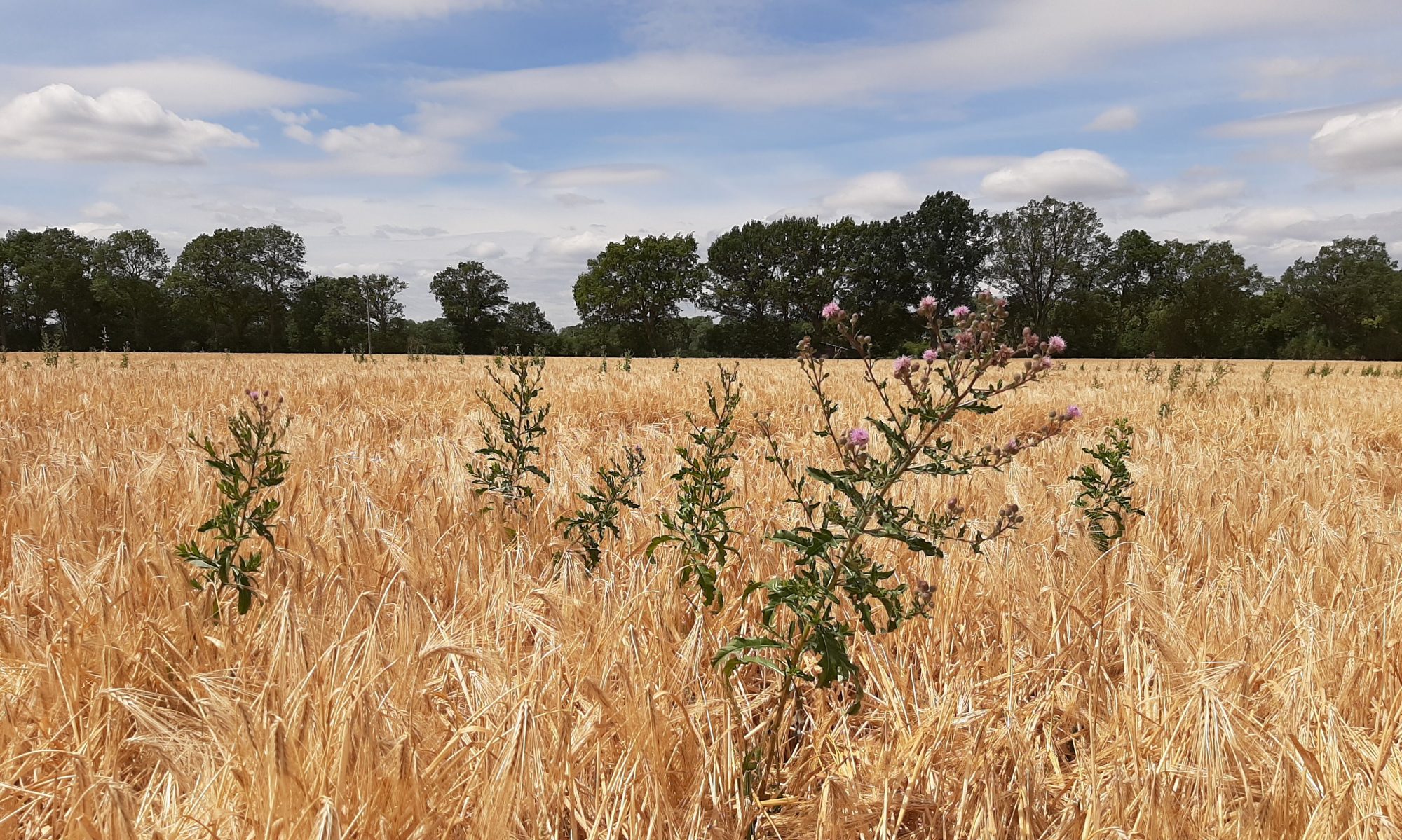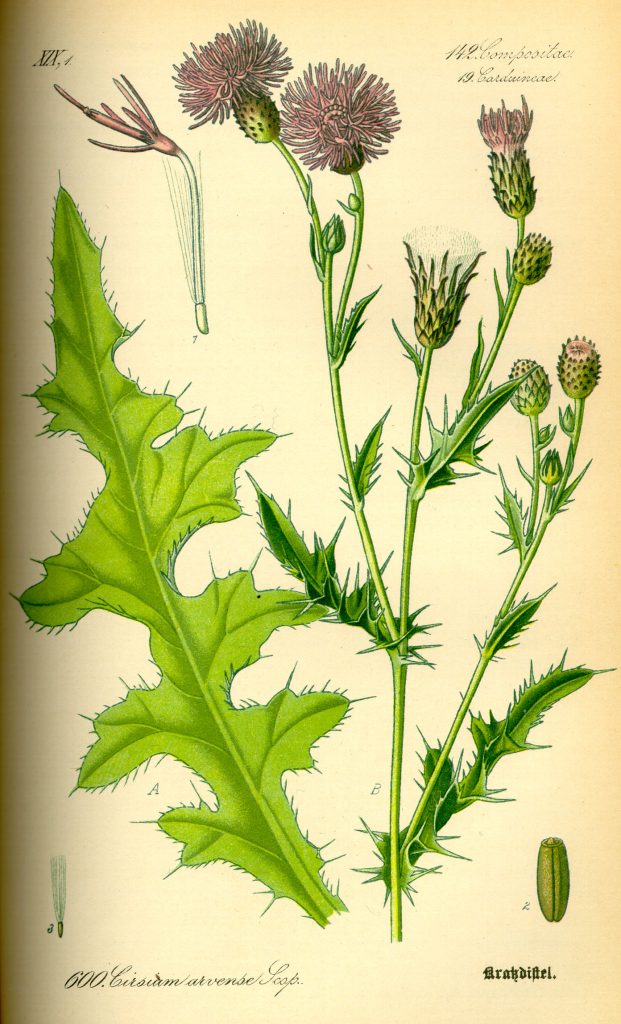Native to Europe, Cirsium arvense (common name: creeping thistle) is one of the world’s most troublesome weeds (1). It has spread throughout North America and North Africa, while also found in parts of the southern hemisphere (2). Especially in organic farming, C.arvense has become a major threat (3).
The weediness and persistence of the plant mainly depends on its vegetative reproduction and far creeping root system (4). This is also why it mainly appears in patches. It has an expanded root system which can reach 3m deep into the soil (5), while the roots spread at a rate of 1 to 2m per year (6). Generative reproduction of this dioecious plant increases the ability to spread to new areas, adapt to new conditions and to increase the genetic diversity of the existing patches (7).
C.arvense is very sensitive to light competition (8), while mechanical disturbance of the belowground root system can diminish its reserves (9). To optimise the control of infested areas, it is imperative to understand its live cycle, growth pattern and resource allocation. By doing so, we can predict the parts of the life cycle in which the weed is most susceptible (low storage of reserves) to cultural, mechanical and chemical control measures.

Photo by: Sabine Andert 
Photo by: Sabine Andert 
Photo by: Sabine Andert
References:
1: Tiley, G.E.D., 2010: Biological Flora of the British Isles. Cirsium arvense (L.) Scop. Journal of Ecology 98, 938-983.
2: Moore, RJ. (1975). The biology of Canadian weeds.13. Cirsium arvense (L.) Scop. Canada Journal of Plant science, 55:1033-1048.
3: Leth, V.,Netland, J.& Andreasen C. (2008). Phomopsis cirsii: a potential biocontrol agent of Cirsium arvense. Weed Research, 48:533-541.
4: Nadeau, L.B. & Vanden Born, W.H. (1989). The root system of Canada thistle. Canadian Journal of Plant Science, 69: 1169-1206.
5: Tiley, G.E.D., 2010: Biological Flora of the British Isles. Cirsium arvense (L.) Scop. Journal of Ecology 98, 938-983.
6: Tworkoski, T. (1992). Developmental and environmental effects on assimilate partitioning in Canada thistle (Cirsium arvense). Weed Science 40:79-85.
7: Hettwer, U., B. Gerowitt, 2004: An investigation of genetic variation in Cirsium arvense field patches. Weed Research 44, 289-297.
8: Dau, A., 2012: Cirsium arvense (L.) Scop in arable farming: Vegetative and generative reproduction as influenced by agronomic measures. PhD-thesis, University of Rostock.
9: Hakansson, S. (2003). Weeds and Weed Management on Arable Land: An Ecological Approach, CAB International, Wallingford, UK.




